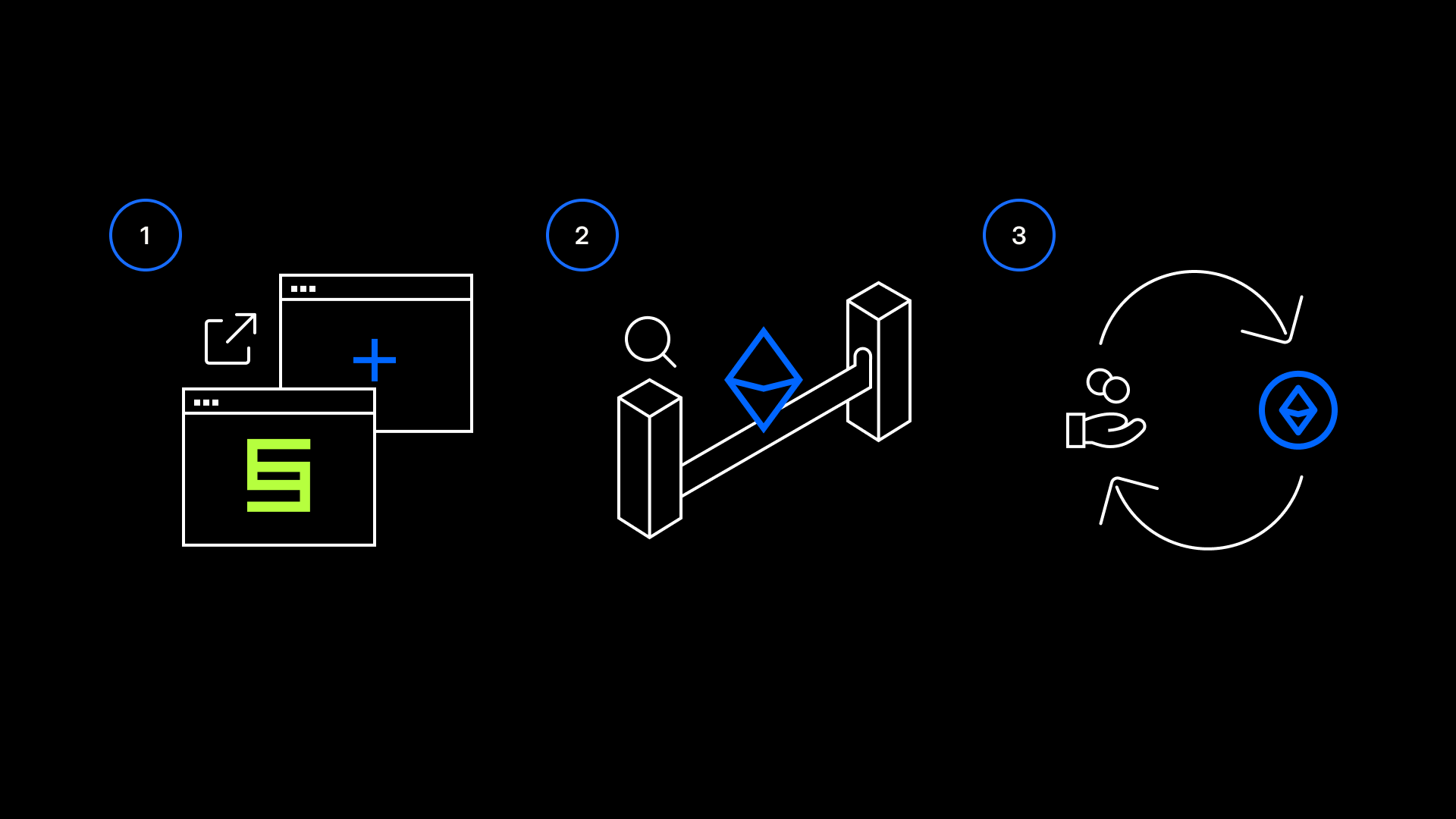Case Study: How Omni’s SolverNet Facilitates Cross-Chain Restaking on Symbiotic

Symbiotic is the first feature-complete shared security protocol with slashing that allows users to restake any ERC-20 token. The protocol has amassed $1.5 billion in TVL, with 24 percent actively delegated across 130 vaults, 105 operators, and 51 networks as of this writing.
However, stakers are currently limited to Ethereum L1 deposits, which hampers Symbiotic’s goal to reach users across multiple ecosystems.
To address this, Symbiotic will imminently integrate Omni’s SolverNet SDK to give their users a seamless, intuitive way to restake with deposits from L2s. The same SDK will also enable the team to quickly implement cross-chain deposits without requiring any smart contract updates.
The Challenge: Simplifying Cross-Chain Restaking

Symbiotic users are currently required to exit the app’s front end, search for a third-party bridge, and manually transfer funds. This multi-step process risks leading to user drop-offs that could, in turn, make it harder for Symbiotic to onboard new users and keep existing ones.
To reach users wherever they are, Symbiotic needs a solution that would accept deposits from Ethereum L2s without interrupting the user journey. It also needs to overcome the complexities involved in cross-chain implementations, which often lead to prolonged developer timelines.
The Solution: SolverNet’s Seamless Integration with Symbiotic
Symbiotic upcoming integration of SolverNet will address these challenges. SolverNet will give Symbiotic:
- A single developer-friendly SDK that integrates into Symbiotic’s existing front without requiring any smart contract changes.
- A user-centric design that keeps restakers within Symbiotic’s UI.
This means that SolverNet will contribute to Symbiotic’s growth in three key ways:
- It will reduce the amount of time normally needed for cross-chain implementation from possibly months to days.
- It will minimize the developer resources normally needed to take an application cross-chain, which will also contribute to a reduction in shipping time.
- It will improve the Symbiotic user experience by reducing the number of steps previously needed to deposit from L2s.
By eliminating barriers for developers and users alike, SolverNet will give Symbiotic a front-end solution that sets them up to expand market reach while improving restaking.
“Integrating SolverNet aligns with our commitment to providing scalable and easy-to-use solutions for our users,” said Misha Putiatin, co-founder and CEO of Symbiotic. “We want Symbiotic to be usable anywhere, and Omni helps us further our mission of being readily available to any ecosystem at a low developer overhead.”
How to Use Symbiotic with Omni SolverNet
To deposit from ETH L2 with Omni, users will be able to follow these steps once SolverNet goes live on Symbiotic:
- In “Restake,” click on the deposit icon next to your preferred collateral
- Click on the “Deposit from…” button to specify which Ethereum L2 network you would like to deposit funds from
- Enter the amount to be deposited and click “Deposit”
- Select “Grant permissions” to allow Omni to deposit your funds and click “Confirm” to proceed when the pop-up appears
- Wait for the “Success” notification
Expanding Access with Omni: Base, Optimism, and Arbitrum — With Solana & More on the Horizon
Omni’s SolverNet SDK will effectively give Symbiotic a scalable, growth-oriented solution that also maintains low developer overhead. This will allow Symbiotic to reach users across ecosystems without needing to undergo many of the challenges developer teams face when building cross-chain applications.
And this is just the beginning — ongoing discussions with teams from Solana and additional ecosystems point to even more use cases for the Omni Orderflow Engine. As apps like Symbiotic continue to scale, SolverNet remains a key enabler in making cross-chain transactions truly seamless, efficient, and accessible to all.
SolverNet and Symbiotic: Frequently Asked Questions (FAQs)
1. What is SolverNet?
The Omni Orderflow Engine consists of Omni Core and SolverNet, which features intent-based architecture. When integrated, SolverNet facilitates cross-chain interoperability by allowing users to restake assets across multiple rollups without needing bridges, manual transfers, or complex gas management.
2. Why did Symbiotic choose SolverNet to improve cross-chain restaking?
Symbiotic needed a scalable and frictionless solution to expand beyond Ethereum L1 and allow users to deposit on Ethereum L2s. SolverNet’s developer-friendly SDK makes for an easy integration that will keep Symbiotic’s core protocol intact.
3. How does SolverNet improve user experience for DeFi applications?
SolverNet removes the need for users to leave an application’s front end to bridge assets or manage gas fees across networks. Instead, users simply broadcast their intent, and SolverNet executes the process behind the scenes.
4. What networks does SolverNet currently support?
SolverNet currently supports Base, Optimism, and Arbitrum with plans to expand to Solana and additional networks in the future.
5. How can developers integrate SolverNet into their applications?
Developers who want to integrate SolverNet into their applications can visit the Omni Network Github. Additionally, teams who would like to build with Omni can contact the team via this intake form.
